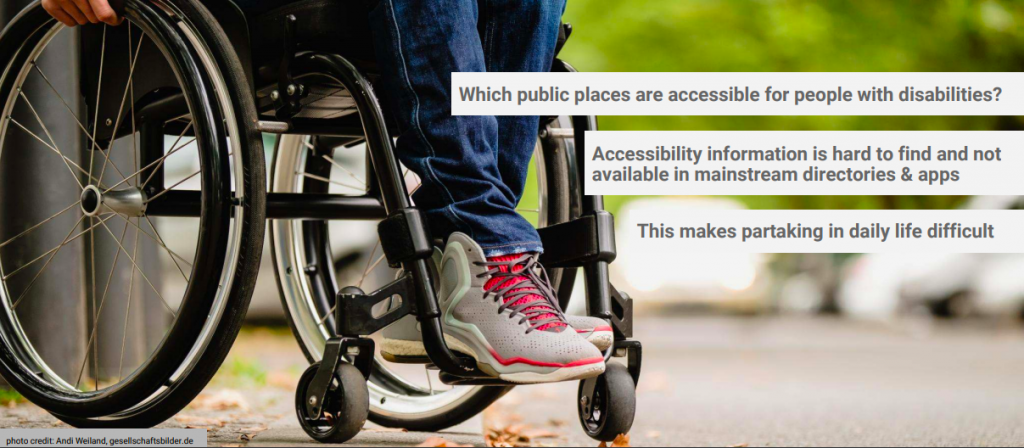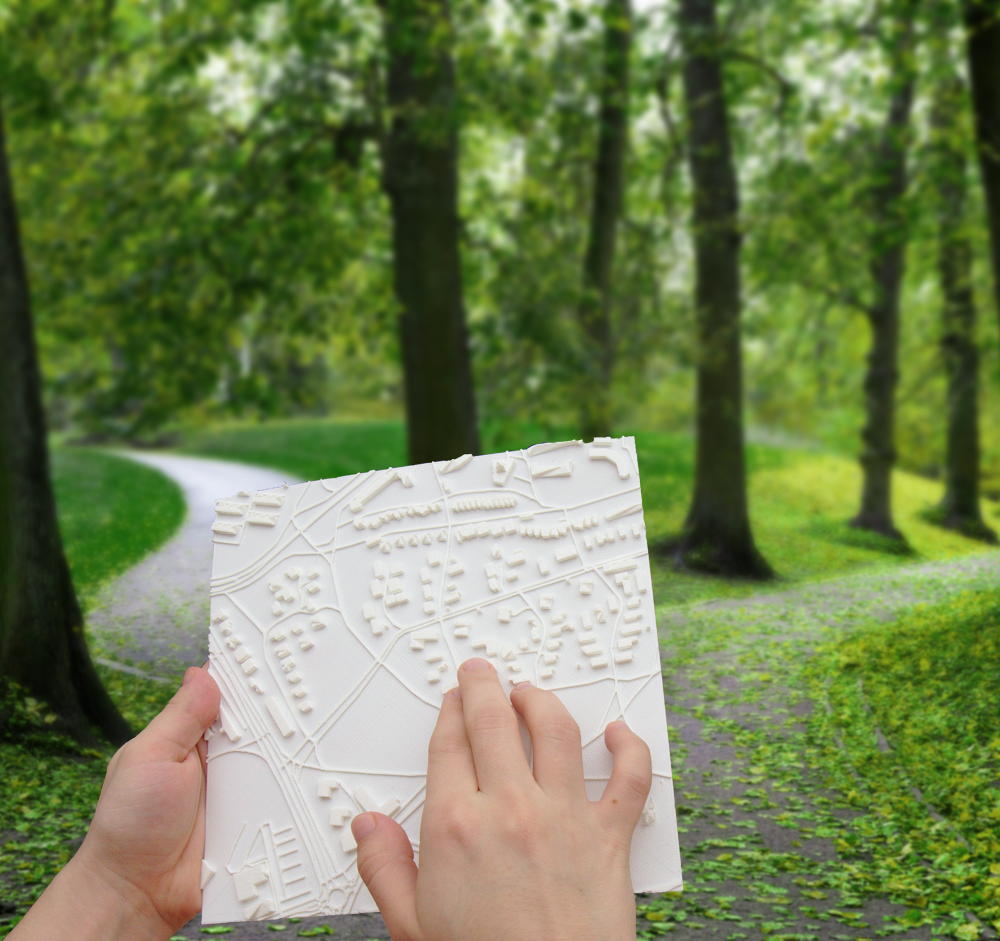The International Day of Persons with Disabilities is observed every December 3rd, and OpenStreetMap marks this day by saying “Our aim is to be the best world map for accessibility”. OpenStreetMap has long been a resource to map and share open data on features related to disabilities.

We asked community members gathered on the accessibility mailing list about why and how OpenStreetMap is so useful.
Jean-Marie Favreau of the Université Clermont Auvergne explained…
The strength of OpenStreetMap is that it allows anyone to contribute accessibility data, whether they are local authorities, user associations, or individual contributors. Being a global project, it facilitates the sharing of observations and learnings of how the equipment, habits and practices of accessibility vary in different coutnries. Finally, the data is in a commons and managed by a community, so it more accurately reflects the reality of the territories it maps.
Nick Bolton of the University of Washington adds…
When people with disabilities seek out map information, they find that accessibility information is missing or doesn’t account for their personal preferences; neither companies nor government agencies are consistently creating connected pedestrian map data flexible enough to meet the diversity of pedestrian concerns expressed by people with disabilities. OpenStreetMap is well-suited to fill this informational gap as it has a flexible and democratically extensible data model, can be mapped out by locals without waiting for an agency or company to dedicate resources or take on liabilities, and all data is immediately published and examined by the public.
We are so glad OpenStreetMap fulfills this need. Read on to learn about applications for persons with disabilities, and ways to contribute to the map.
Apps for accessibility
There are many applications and research projects for persons with disabilities that use OpenStreetMap for collecting and sharing accessibility data, and for communicating that data in appropriate ways.
One of the most well known applications for tracking and sharing accessibility data is Wheelmap. Wheelmap helps find and tag the wheelchair accessibility of points of interest. There’s both an android app and iphone app. They are currently running an important campaign to map the accessibility of Covid-19 testing sites. Svenja Heinecke shared more about Wheelmap at the 2018 State of the Map.
Data on sidewalks is critical to accessible navigation. OpenSidewalks focuses on developing tagging schemes and tools for collecting accessibility data of sidewalks, and its sister project AccessMap creates individualized accessible routing plans for people with mobility impairments. Both are projects of the Taskar Center at the University of Washington. This approach has been picked up by the Italian OpenStreetMap community in Padova and Milan, with people with disabilities, high school students, and other new mappers contributing.
And then there is navigating indoors. AccessbileMaps is a project of the Technische Universität Dresden in cooperation with the Karlsruher Institut für Technologie and focuses on indoor accessibility. They develop tools for mapping buildings with the Simple Indoor Tagging scheme, especially accessibility information, and produce applications using indoor data from OSM for blind, visually impaired and mobility impaired people to plan trips.

Then this data needs to be used in appropriate ways, and the creativity and innovation is inspiring.
Tactile maps help people who are blind or partially sighted navigate their surroundings. Touch Mapper uses 3D printing to create tactile maps from OSM data.
Soundscape from Microsoft Research helps users with visual disabilities to create better mental maps of their surroundings for navigation. Using audio to describe places, they can naturally and intuitively explore more and feel more comfortable and connected in new environments. The app is built on OpenStreetMap data.
Compas research project at the University Clermont Auvergne develop ACTIVmap in partnership with other academic and private sector researchers to build multimodal maps leveraging tactile, sound and haptic feedback to represent and interact with geographic information.
How can you help?

You can of course also add disability-related tags with regular OpenStreetMap editors like JOSM and iD, and mobile apps like Vespucci, StreetComplete, OsmAND, and Go Map!!
The OpenStreetMap wiki has a comprehensive guide to tags useful for the needs of people with disabilities. Here are just a few of the kinds of features that can be tagged in OpenStreetMap, many of these can be added quickly and easily with StreetComplete:
- Tactile paving (
tactile_paving=yes/no) and tactile information maps (information=tactile_map) - Designated parking spaces (
amenity=parking_space+access=no+disabled=yes/designated) - Traffic signals with sound (
traffic_signals:sound=yes/no) - Accessibility information for steps, such as the presence of handrails (
handrail:left/right/center=yes/no), the number of steps (step_count=*) as well as whether there is a ramp (ramp=yes/no) and which kind - Wheelchair accessibility at shops and other amenities (
wheelchair=yes/limited/no) as well as bathrooms (toilets:wheelchair=yes/no)
There are many other ways to help, documented on the wiki as well. For example, promote OpenStreetMap with friends who have a disability, and ask them how else OSM can help. You could organize a mapping party focused on mapping these kinds of features. Translate our wiki pages on disabilities to other languages. Or build new routing and rendering applications for people with disabilities.
OSM’s freeform tagging system is always evolving, if there’s something you think should be mapped in OSM, but isn’t, you can help guide that process to wider adoption.
Join us
Let us know how you’re contributing. And to connect with our community, join the list at https://lists.openstreetmap.org/listinfo/accessibility by sending an email to accessibility-subscribe@openstreetmap.org.
